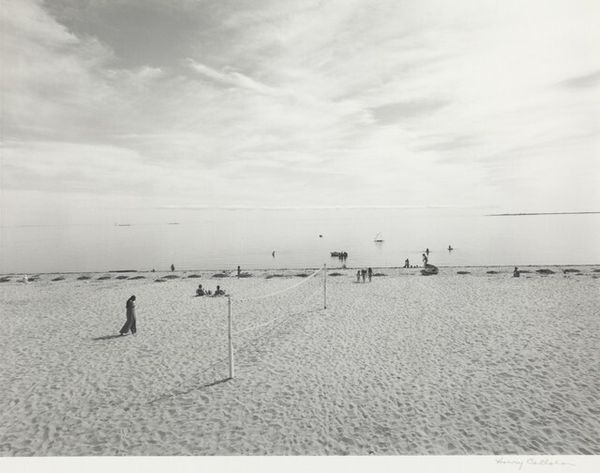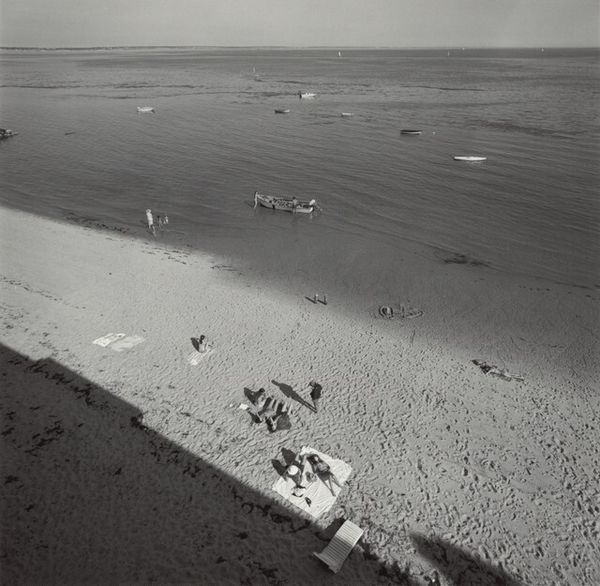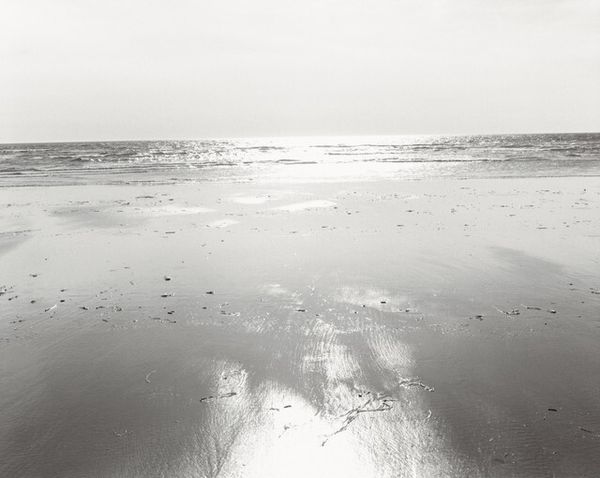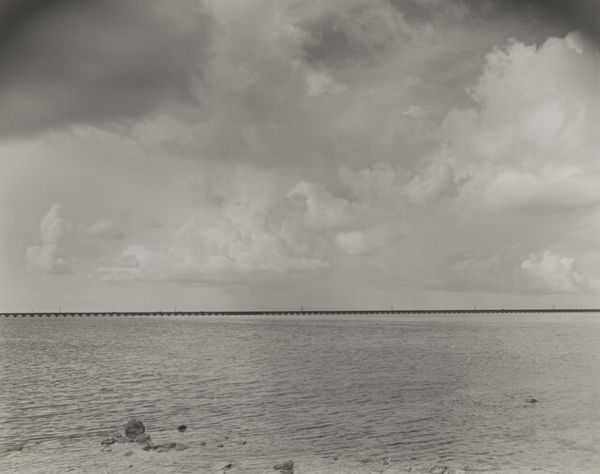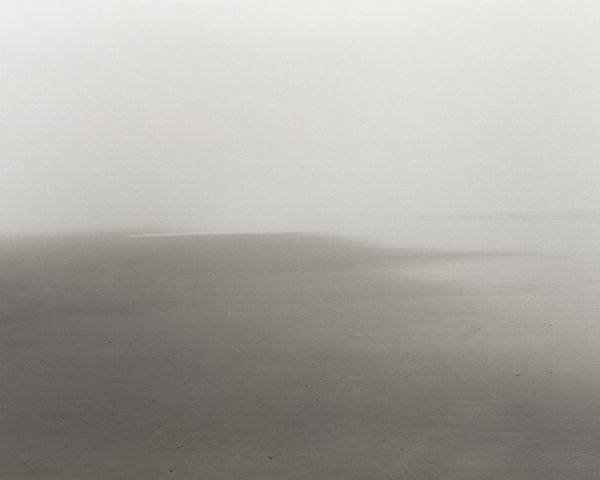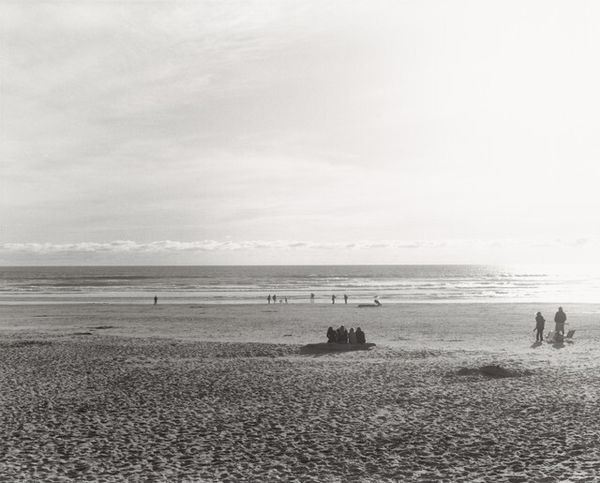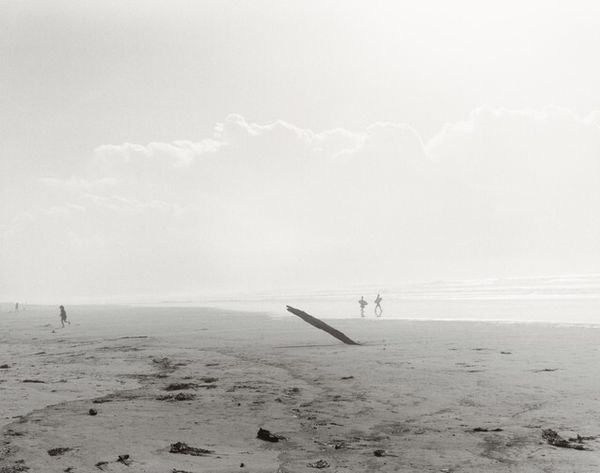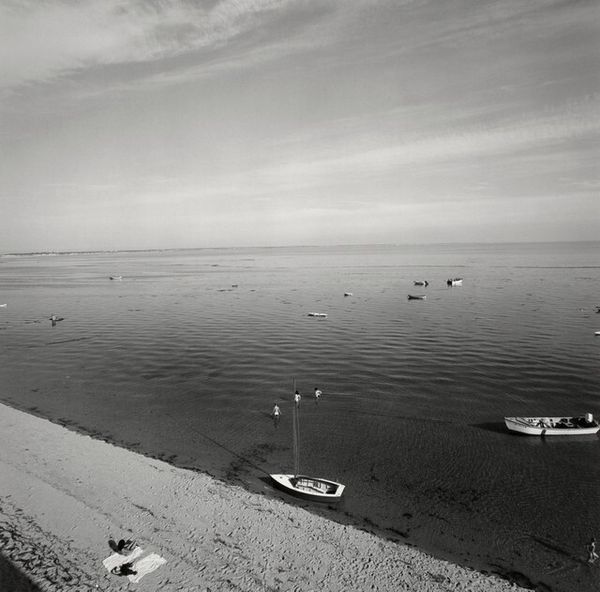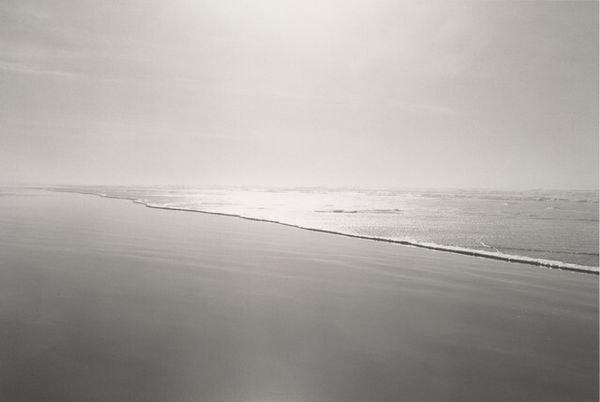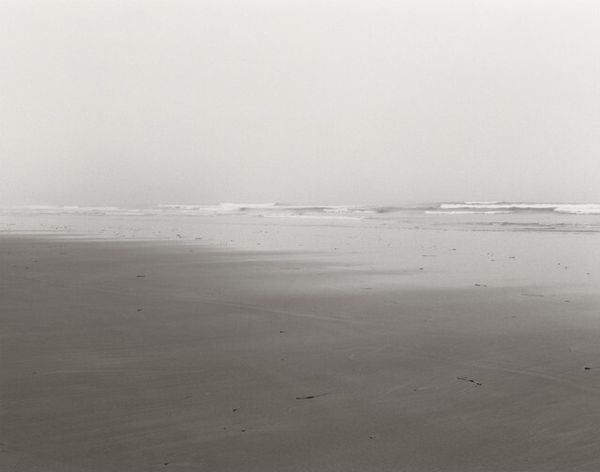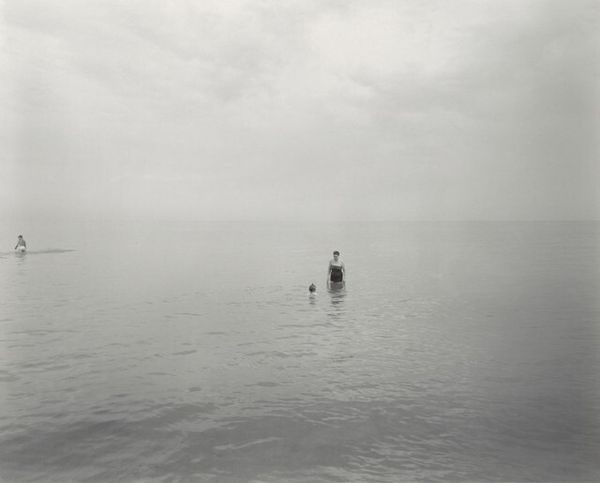
photography, gelatin-silver-print
#
landscape
#
nature
#
photography
#
outdoor scenery
#
sky photography
#
gelatin-silver-print
#
monochrome photography
#
realism
#
monochrome
Dimensions: image: 22.2 x 29.4 cm (8 3/4 x 11 9/16 in.) sheet: 28 x 35.3 cm (11 x 13 7/8 in.)
Copyright: National Gallery of Art: CC0 1.0
Curator: Harry Callahan’s “Cape Cod,” a gelatin-silver print from 1972, offers a study in contrasts—sand, sea, and sky meeting in delicate gradations of light. It's one of his landscapes from that series of work done there, known for his experimentation. Editor: It's stunning, so quietly powerful. It hits me with a wave of… melancholy? That lone volleyball net stranded on the shore – is it an invitation or a ghostly relic of summer days gone by? Curator: That’s an interesting take. The volleyball net certainly functions as a powerful, almost geometric, symbol against the natural backdrop. I read it as a commentary on the interaction of human structures with the organic world, each imposing on the other, or perhaps coexisting uneasily. Think of the grid that it brings against the shapeless forms of the waves. Editor: Un uneasily, perhaps, because the grayscale lends it a timeless quality, erasing the bright colors and vibrancy usually associated with the beach. It is desaturated. And the overcast sky definitely amplifies that pensive, somber feel, but it's strangely comforting too? Like staring out at the ocean and remembering bittersweet memories. Curator: Absolutely. Callahan was masterful at harnessing tone and texture. In many ways, he was influenced by Ansel Adams, but his own perspective brings out deeper meanings within landscape photography. There's that focus on detail that elevates a simple scene into something much deeper. Note how the light itself seems to almost ripple across the sand. Editor: True. The beach seems deserted except for that ghostly net. You almost expect to see the memory of a volleyball game flitting across it, those sounds echoing in the air long gone. The boats along the horizon add to the quietude, don't they? Reminders of absence... or of the promise of journey... of solitude... Curator: It's tempting to fill in the blanks isn’t it? It speaks of fleeting moments, really – how a scene transforms as soon as it settles. We often speak about cultural imprints that objects such as a simple net and some scattered boats, have in relation to the place. So, what we end up witnessing here, perhaps, is more of a portrait of time than merely the depiction of an actual, particular location. Editor: Well, whatever it is, I won't look at a volleyball net the same way again.
Comments
No comments
Be the first to comment and join the conversation on the ultimate creative platform.
